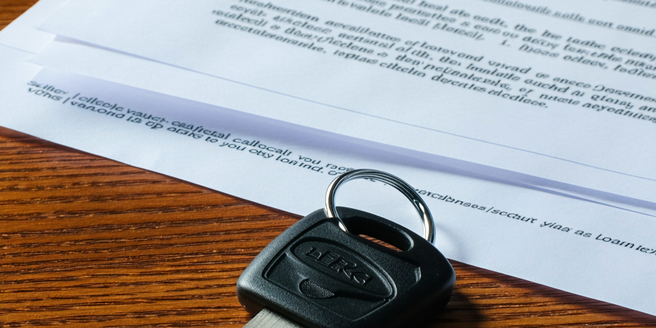
Understanding the Basics of Secured Loans
| Feature | Description | Example |
| Collateral | Asset required to secure loan. | Property, vehicle |
| Interest Rates | Typically lower due to reduced lender risk. | Mortgage rates |
| Loan Amount | Usually higher because of collateral backing. | $100,000+ |
| Repayment Period | Generally long-term to lessen monthly impact. | 15-30 years |
| Approval Process | Requires property assessment and documentation verification. | Appraisals, credit checks |
| Risk to Borrower | Loss of asset if loan defaults. | Foreclosure |
Exploring Unsecured Loan Characteristics
Unsecured loans are financial products that do not require the borrower to provide collateral. This means no assets need to be pledged as security, which is an attractive feature for individuals who do not wish to risk losing personal property. As a result, the approval process for unsecured loans often depends heavily on a borrower’s credit history and income. These loans are typically used for smaller amounts with shorter repayment terms. Since they pose a higher risk for lenders, unsecured loans usually carry higher interest rates compared to secured loans. Despite the absence of collateral requirements, borrowers must ensure they maintain a good credit score to qualify. While unsecured loans provide flexibility and ease, it’s vital for borrowers to compare different lenders’ terms and rates to get the best deal and avoid overburdening themselves financially.
Pros and Cons of Secured Loans
Secured loans offer both benefits and drawbacks. One advantage is the typically lower interest rates available due to the presence of collateral, reducing risk for lenders. This can make the repayment process more manageable for borrowers. Additionally, secured loans often offer higher borrowing limits, allowing access to significant funds. However, there are notable disadvantages. The requirement of collateral places personal assets at risk, such as a home or vehicle, which can be seized in the event of default. Moreover, the approval process can be more stringent and time-consuming, involving detailed asset assessments. Prospective borrowers must weigh the affordable rates against the potential risk to personal property and the possibility of losing significant assets if circumstances deteriorate.
Benefits and Drawbacks of Unsecured Loans
Unsecured loans present both appealing benefits and notable drawbacks. The primary benefit is that no collateral is needed, protecting personal assets like homes and vehicles from being seized if repayment difficulties arise. This aspect offers peace of mind for those hesitant about risking valuable possessions. Unsecured loans typically feature a quicker approval process, as they do not require asset verification. Nevertheless, their drawbacks include higher interest rates due to increased lender risk, potentially leading to more significant lifetime cost of the loan. Borrowers might also face stricter credit requirements to qualify, as lenders rely heavily on creditworthiness to mitigate their risk. Therefore, while unsecured loans offer convenience and asset security, prospective borrowers should carefully evaluate their ability to meet possibly higher payments.
Collateral: The Main Differentiator
Collateral is fundamentally what differentiates secured loans from unsecured ones. In a secured loan, the borrower provides collateral, or an asset, to secure the loan, effectively minimizing the lender’s risk. This safeguard means lenders can offer lower interest rates and higher loan amounts. Conversely, unsecured loans do not require any assets to be pledged, relying primarily on the borrower’s creditworthiness and income potential. The absence of collateral in unsecured loans results in higher interest rates and usually lower borrowing limits. Collateral significantly impacts both the borrower’s risk and the lender’s terms offered. Understanding the role of collateral is essential for borrowers as it directly influences the terms and conditions of their loan, including interest rates, amounts accessible, and repayment flexibility.
Interest Rates: Secured vs. Unsecured
Interest rates are a crucial consideration when choosing between secured and unsecured loans. Secured loans typically offer lower interest rates, attributable to the collateral provided, which reduces the lender’s risk. This reduction allows lenders to offer competitive rates, making secured loans potentially more affordable over a longer term. In contrast, unsecured loans usually carry higher interest rates, as lenders do not have collateral to fall back on if the borrower defaults. While this might result in higher monthly payments, unsecured loans can still be a viable option for those who don’t want to risk personal assets. Borrowers should always compare interest rates between different lenders, taking into account the total cost of the loan over its entire term, to determine which option best suits their financial situation.
Eligibility Criteria for Both Loan Types
Eligibility criteria for secured and unsecured loans can vary considerably. Secured loans generally require the borrower to own sufficient assets to offer as collateral—be it real estate, vehicles, or savings accounts. Lenders assess the asset’s value to ensure it adequately covers the loan in case of default. It is important for borrowers to be aware of the risks associated with using assets as collateral. Conversely, unsecured loans place a more significant emphasis on the borrower’s credit history and score, alongside their income levels. A strong credit profile and reliable income sources are crucial for obtaining favorable terms. Each loan form has inherent benefits determined by its qualifying criteria; understanding these can assist applicants in opting for the most suitable loan plan while also improving their application success chances.
Application Process: A Step-By-Step Comparison
The application process for secured and unsecured loans varies, reflecting their intrinsic differences. For secured loans, applicants usually begin by assessing their eligible assets, followed by necessary valuations or appraisals to determine collateral value. Documentation such as property deeds or car titles may be required. For unsecured loans, the process emphasizes the borrower’s creditworthiness, with applications calling for a strong credit history and proof of income. While unsecured loans offer faster approvals due to fewer documentation requirements, secured loans often provide more favorable terms once the lengthy approval process is completed. Understanding these steps can help borrowers streamline their applications, allowing a focus on preparing the necessary documentation specific to the loan type.
Risks Involved in Choosing Secured Loans
Selecting secured loans presents distinct risks, rooted mainly in the collateral requirement. When a borrower defaults on the loan, collateral becomes the lender’s property, posing a significant risk of losing valuable possessions such as a home or car. This risk factor should deter borrowers without stable financial footing. It is also important to have a clear repayment plan in place to minimize these risks. Furthermore, the burden of potential asset forfeiture can stress borrowers during financial hardship periods, causing emotional and economic strain. Legal repercussions following asset repossessions or foreclosures might impact the borrower’s credit score adversely. Therefore, it is imperative for borrowers to evaluate their current financial capabilities and borrowing necessities diligently before committing to a secured loan.
Managing Debt: Strategies for Loan Types
Strategizing around secured and unsecured loans requires distinct approaches due to their inherent differences. For secured loans, asset management becomes a focus since collateral underpins the loan—keeping up regular payments preserves personal property. Budgeting effectively to maintain payment schedules minimizes the risk of default, protecting against asset loss. It’s crucial to assess the value of the collateral periodically to ensure it matches the outstanding loan balance. Meanwhile, managing unsecured loans should prioritize maintaining a strong credit profile since collateral isn’t involved. This includes timely repayments and prudent utilization of credit to avoid escalating interest and deteriorating credit scores. Borrowers benefiting from either loan type must ensure a comprehensive repayment plan is in place to manage the debt efficiently, thus maintaining financial stability while promoting future creditworthiness.

